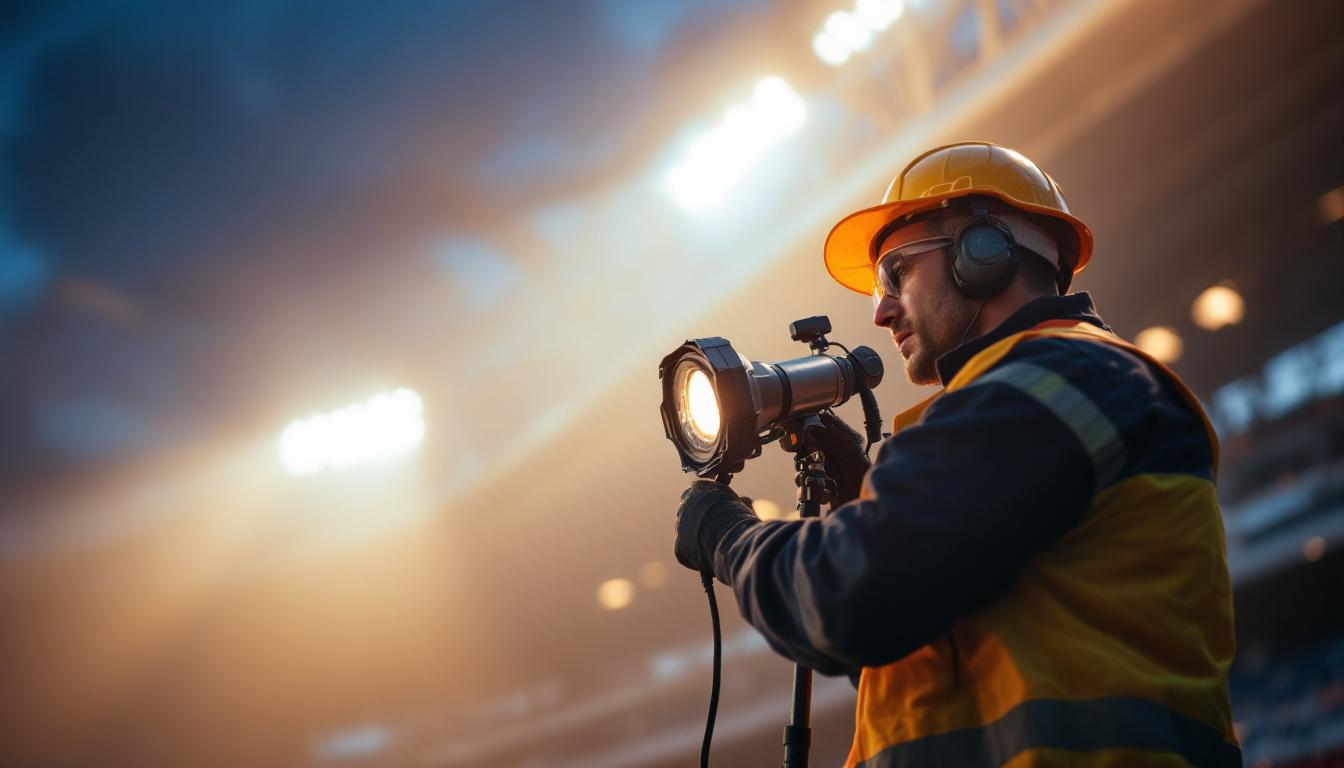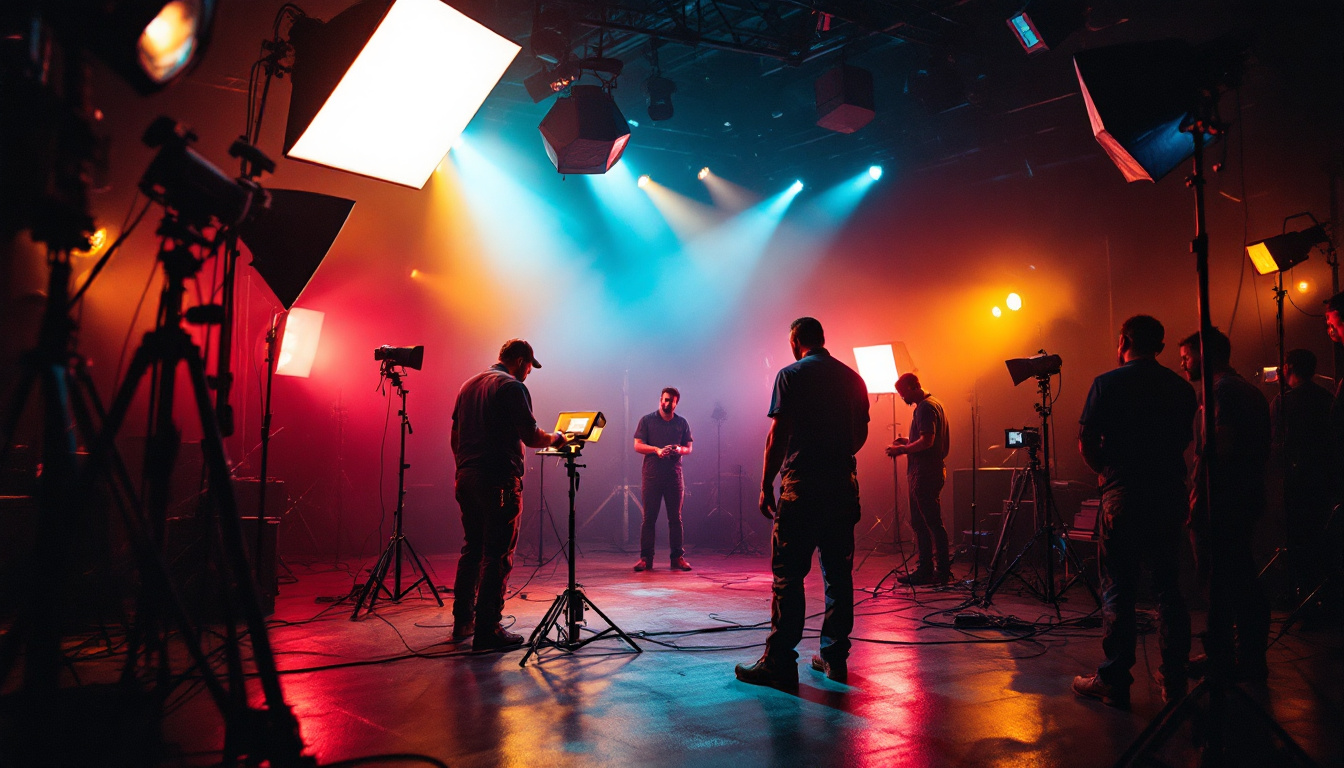
Field lighting is an essential component in a variety of outdoor environments, from sports complexes and parking lots to industrial yards and public parks. For lighting contractors, ensuring that these spaces are illuminated effectively is not just about visibility—it’s about safety, energy efficiency, and enhancing user experience. Mistakes in design, installation, or maintenance can lead to costly repercussions, including increased energy consumption, poor lighting quality, and even legal liabilities.
Proper field lighting balances brightness, uniformity, and glare control while considering environmental factors and regulatory standards. Contractors who master these elements can deliver installations that meet client expectations and comply with local codes, ultimately fostering long-term satisfaction and repeat business.
Moreover, the impact of well-designed field lighting extends beyond mere functionality; it plays a crucial role in community engagement and the promotion of outdoor activities. For instance, well-lit sports fields encourage extended playtime, allowing teams to practice and compete in the evenings, which can be particularly beneficial in regions with shorter daylight hours. This not only enhances the experience for players and spectators alike but also strengthens community ties as more events and gatherings can be held under safe and inviting conditions.
Additionally, advancements in lighting technology, such as LED systems, have revolutionized the way field lighting is approached. These modern solutions offer significant energy savings and longer lifespans compared to traditional lighting options, making them an economically viable choice for municipalities and private entities alike. With the added benefits of smart lighting controls that can adjust brightness based on real-time conditions, lighting contractors are now equipped to provide solutions that are not only effective but also environmentally friendly, aligning with the growing demand for sustainable practices in public infrastructure.
One of the most frequent errors is insufficient upfront planning. Lighting contractors sometimes rush into installation without a thorough site assessment, leading to misaligned fixtures, uneven illumination, or overlooked obstructions. Every site has unique characteristics—terrain, existing structures, and natural light sources—that influence lighting design.
To avoid this, conduct a comprehensive site survey before any work begins. Use photometric analysis tools to model light distribution and identify potential problem areas. Collaborate with clients to understand the intended use of the space, peak activity times, and any specific safety concerns. This groundwork ensures that the lighting design is tailored to the environment and user needs. Additionally, consider the seasonal variations in natural light, as these can significantly affect how artificial lighting is perceived and utilized throughout the year. Engaging with local stakeholders can also provide insights into community expectations and historical lighting issues that may need to be addressed.
Field lighting projects must adhere to local, state, and national regulations, including those set by organizations such as the Illuminating Engineering Society (IES) and the International Dark-Sky Association (IDA). Failure to comply can result in fines, forced redesigns, or community backlash due to light pollution.
Contractors should stay updated on the latest codes and standards relevant to their jurisdiction. This includes understanding maximum allowable light levels, glare restrictions, and requirements for energy efficiency. Incorporating these standards into the design phase not only ensures compliance but also promotes sustainable lighting practices. Furthermore, engaging in community outreach can help educate the public on the benefits of adhering to these regulations, fostering a collaborative approach to lighting solutions that balance functionality with environmental responsibility.
Selecting inappropriate fixtures or outdated technology is a costly mistake. For example, using high-pressure sodium lamps in areas where LED fixtures would provide better energy efficiency and color rendering can negatively impact both performance and operational costs.
LED technology has become the industry standard due to its longevity, energy savings, and superior light quality. However, not all LEDs are created equal. Pay attention to fixture ratings, color temperature, lumen output, and beam angles. Fixtures should be rated for outdoor use and resistant to weather conditions typical for the installation site. Additionally, consider the aesthetic aspects of the fixtures; modern designs can enhance the visual appeal of the space while providing the necessary illumination. Exploring smart lighting options that allow for remote control and real-time adjustments can further optimize energy use and adapt to changing conditions.
Improper fixture placement can cause uneven lighting, excessive glare, or wasted energy. Mounting lights too low may create dark spots or shadows, while mounting them too high can result in light spillage and reduced intensity on the target area.
Use photometric layouts and simulations to determine optimal fixture locations and heights. For sports fields, for instance, mounting heights typically range between 60 and 100 feet depending on the sport and field size. Proper spacing between fixtures ensures uniform coverage and minimizes shadowing. It’s also essential to consider the angle of the fixtures; tilting them slightly can help direct light where it’s needed most and reduce glare for players and spectators alike. Engaging with athletes and coaches during the planning phase can provide valuable feedback on visibility needs specific to the sport, ensuring that the lighting enhances performance rather than hinders it.
Glare can cause discomfort and reduce visibility, defeating the purpose of field lighting. Additionally, light trespass—unwanted light spilling into neighboring properties—can lead to complaints and regulatory issues.
Incorporate shielding and precise aiming of fixtures to control glare. Use full cutoff or cutoff-rated fixtures to direct light downward and limit upward or sideways spill. Consider installing dimming controls or motion sensors in areas where lighting demand varies, reducing unnecessary illumination and minimizing disturbance to nearby residents. Moreover, educating clients about the importance of glare control can help them understand the long-term benefits of investing in quality fixtures and proper placement, ultimately leading to a more harmonious relationship with the surrounding community.
Lighting systems require regular maintenance to sustain performance. Contractors sometimes overlook accessibility for fixture cleaning, lamp replacement, or repairs, leading to increased downtime and higher costs over the system’s lifecycle.
Design installations with maintenance in mind. Use fixtures with longer lifespans and modular components that simplify replacement. Ensure that poles and mounts are accessible via lifts or ladders compliant with safety regulations. Providing clients with a maintenance plan and schedule can extend the life of the lighting system and preserve its effectiveness. Additionally, consider incorporating smart technology that can monitor fixture performance and alert maintenance teams to issues before they become significant problems. This proactive approach not only enhances the reliability of the lighting system but also fosters a culture of care and responsibility among stakeholders, ensuring that the investment in field lighting continues to pay dividends over time.
Successful field lighting begins with a collaborative design process involving lighting designers, engineers, and clients. Use advanced software tools for photometric analysis to predict how light will behave in the field environment. This approach minimizes guesswork and helps identify potential issues before installation.
Engage stakeholders early to clarify expectations and operational requirements. For example, sports facilities may have different lighting needs for practice sessions versus competitive events. Understanding these nuances allows for flexible lighting solutions, such as adjustable brightness levels or zoning controls.
Energy consumption is a major concern for clients, especially for large-scale field lighting installations. Emphasize energy-efficient technologies like LEDs combined with smart controls, including timers, dimmers, and occupancy sensors. These measures can reduce energy costs significantly while maintaining optimal lighting levels.
Consider integrating renewable energy sources, such as solar-powered lighting, where feasible. This not only lowers operational expenses but also aligns with growing environmental responsibility trends and client sustainability goals.
Proper installation is critical to achieving intended lighting performance. Ensure that all electrical connections meet safety standards and that fixtures are securely mounted to withstand environmental stresses like wind and vibration.
After installation, conduct thorough testing during different times of day and under various weather conditions. Verify that illumination levels meet design specifications and that there are no issues with glare or light trespass. Document the results and provide clients with detailed reports to demonstrate compliance and quality assurance.
Educate clients on the operation and maintenance of their lighting systems. Provide clear instructions for using control systems and highlight the importance of regular inspections and cleaning. Well-informed clients are more likely to maintain their lighting properly and address issues promptly, extending the system’s lifespan.
Offer training sessions or manuals tailored to the client’s technical expertise. This proactive approach builds trust and positions the contractor as a knowledgeable partner rather than just a service provider.
A mid-sized sports complex faced complaints about uneven lighting and high energy bills. The original installation used outdated metal halide fixtures with inconsistent mounting heights. A lighting contractor conducted a full site assessment and replaced the fixtures with high-efficiency LEDs, optimizing placement based on detailed photometric analysis.
The result was a 40% reduction in energy consumption and improved uniformity across all fields, enhancing player safety and spectator experience. The contractor also installed a centralized control system allowing for scheduling and dimming, further reducing operational costs.
An industrial yard required better illumination to improve worker safety during night shifts. The existing lighting caused glare and shadows, creating hazardous conditions. The contractor implemented cutoff-rated LED fixtures with adjustable aiming and added motion sensors in low-traffic areas.
This retrofit eliminated glare issues, increased visibility, and reduced energy use by nearly 50%. The client reported fewer accidents and higher worker satisfaction, demonstrating the value of thoughtful lighting design in industrial settings.
Field lighting projects demand a careful balance of technical knowledge, regulatory compliance, and practical experience. Lighting contractors who avoid common pitfalls—such as inadequate planning, non-compliance, poor fixture selection, and neglecting maintenance—can deliver superior results that satisfy clients and enhance safety.
By embracing best practices, including comprehensive design, energy-efficient technologies, quality installation, and client education, contractors position themselves as trusted experts in the field lighting industry. This approach not only improves project outcomes but also builds a reputation for excellence that drives future business opportunities.
Ready to elevate your field lighting projects with the best in spec-grade lighting products? At LumenWholesale, we provide lighting contractors like you with the highest quality solutions at unbeatable wholesale prices. Say goodbye to inflated markups and hello to a vast selection of reliable, high-performance lighting that meets rigorous industry standards. Plus, with free shipping on bulk orders, you can ensure your projects shine without the burden of hidden fees. Don’t compromise on quality or value—choose LumenWholesale for the perfect blend of affordability and convenience. Wholesale Lighting at the Best Value is just a click away.

Discover the crucial role of junction box cover plates in lighting installations.

Discover innovative cost-saving strategies for lighting contractors in the landscaping industry.

Discover the ultimate guide to commercial LED shop lights, exploring their benefits, types, and installation tips.

Discover how proximity to film sets can be a game-changer for lighting contractors.